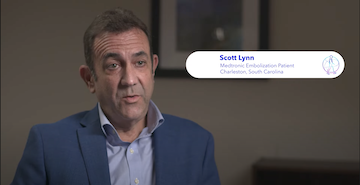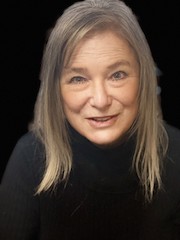La Oficina del Defensor de Inmigrantes Detenidos ofrece un nuevo enfoque de supervisión en los centros de detención de EE. UU.
(NewsUSA) - La Oficina del Defensor de Inmigrantes Detenidos (OIDO) es un recurso para defensores, representantes legales y familiares de personas detenidas para presentar quejas sobre mala conducta o malas condiciones de vida en la detención y custodia de inmigrantes de EE. UU.
- La Oficina del Defensor de Inmigrantes Detenidos (OIDO) es un recurso para defensores, representantes legales y familiares de personas detenidas para presentar quejas sobre mala conducta o malas condiciones de vida en la detención y custodia de inmigrantes de EE. UU.
El formulario de admisión de la Oficina, Formulario DHS 405, permite que las personas que han sido detenidas, o sus representantes, presenten reclamaciones confidenciales sobre el trato y las condiciones en los centros de detención de inmigrantes. Esto incluye cuestiones como la mala conducta del personal, tratamiento médico inadecuado, baños o áreas de descanso en mal estado, falta de acceso a un abogado o problemas de seguridad que podrían causar daño a los detenidos.
Creada por el Congreso en 2019, OIDO es una oficina independiente dentro del Departamento de Seguridad Nacional (DHS) de los EE. UU., separada del Servicio de Inmigración y Control de Aduanas (ICE) y la Protección de Aduanas y Fronteras (CBP). La Oficina está a cargo de investigar las quejas sobre el trato y las condiciones en los centros de detención de los EE. UU. que alojan a las personas bajo custodia federal de inmigración. OIDO también brinda supervisión para garantizar que los centros de detención cumplan con la ley y los estándares para la detención de inmigrantes.
“Nuestra misión consiste en evaluar las quejas individuales, realizar inspecciones anunciadas y no anunciadas, revisar los contratos de detención y realizar estudios y encuestas sobre las tendencias en la detención de inmigrantes para informar al Secretario del DHS, ICE, CBP y el Congreso”, señaló David, el Defensor del Pueblo interino de Inmigrantes Detenidos, David Gersten. “Nuestro singular rol distingue a OIDO como un conducto importante y objetivo de información sobre la detención de inmigrantes para los legisladores y el público”.
Un objetivo clave para OIDO es la accesibilidad, y esto incluye traducir la información y los recursos, incluidos los formularios de quejas, a varios idiomas y hacer que esos recursos estén fácilmente disponibles para los detenidos en los centros y para el público en Internet.
OIDO ha establecido una presencia persistente dentro de los entornos de detención y custodia. Los administradores de casos y los investigadores de supervisión de detención que entienden los asuntos de detención y pueden recomendar soluciones a las quejas sobre el trato de los detenidos y las condiciones de las instalaciones visitan las instalaciones de detención con regularidad. Al tener esta supervisión independiente constantemente presente en los centros de ICE y CBP, OIDO puede ser proactivo y oportuno para ayudar a resolver las cuestiones de detención.
“El personal de OIDO está capacitado y encarna la pasión por la inmigración, el cuidado y la custodia en detención civil y la protección de los derechos de las personas en detención migratoria”, señaló Gersten. “Estamos comprometidos a servir como un recurso confiable y neutral para la comunidad de detenidos y sus defensores mientras trabajamos conjuntamente para crear un sistema de detención de inmigrantes más seguro y humano”.
OIDO ha completado numerosas observaciones e inspecciones de sitios y centros de detención en los EE. UU., fortaleciendo sus capacidades y perspectiva de campo, difundiendo la conciencia pública sobre su propósito y sus actividades, y construyendo una red cooperativa de partes interesadas.
Si bien el cargo de OIDO es amplio, no tiene la autoridad para manejar asuntos relacionados con la liberación, la supervisión comunitaria, las alternativas a la detención, el estado migratorio o las solicitudes de asilo. Los resultados de una inspección de OIDO no afectan el estado del caso de inmigración de un detenido, ya sea positiva o negativamente.
El proceso de quejas de OIDO tampoco pretende sustituir o reemplazar los procesos de quejas existentes que se utilizan en los centros de detención; más bien, se considera una línea adicional de apoyo para hacer avanzar una queja hacia la resolución y está diseñado para complementar las funciones de supervisión existentes dentro del DHS.
Si bien los funcionarios de OIDO cumplen su función de independencia y neutralidad, también reconocen los beneficios de colaborar con ICE y CBP para garantizar que sus recomendaciones para mejorar las condiciones de los centros de detención se implementen según lo previsto por el Congreso. OIDO tiene miembros del equipo que trabajan con el Centro de Admisión Conjunta de CBP para de revisar las quejas presentadas con respecto a esa agencia con el fin de garantizar la capacidad de respuesta y la imparcialidad. OIDO también coordina con la Oficina de Derechos Civiles y Libertades Civiles del DHS, la Oficina del Inspector General y el componente de las Oficinas de Responsabilidad Profesional para facilitar el manejo adecuado de los asuntos dentro de sus respectivas áreas de responsabilidad.
Mirando hacia el futuro, la visión de OIDO es crear conciencia y mejorar su rol como una entidad accesible y receptiva que brinda reparación a las personas en detención de inmigración. Esto incluye construir y fortalecer las relaciones con las agencias componentes del DHS, así como con los socios externos, aprovechar la información y la experiencia para informar a los tomadores de decisiones y al público, contratar personal de supervisión adicional, y crear una cultura laboral basada en la confianza, la transparencia y el impacto.
“Nuestro objetivo para 2023 es construir sobre el crecimiento organizacional sustancial que experimentamos en 2022, mientras cumplimos nuestro rol como un organismo de control objetivo, independiente e intermediario para las quejas presentadas por los detenidos de inmigración”, expresó Gersten.
Para obtener más información sobre OIDO o presentar una queja, visite DHS.gov/OIDO.



 -
- 
 - See the Great Cities of Europe on a Mediterranean Cruise
- See the Great Cities of Europe on a Mediterranean Cruise
 - With food costs on the rise, many people are looking for meals and recipes that stretch their dollar. According to The Peanut Institute, peanuts and peanut butter are some of the most affordable, nutrient-dense sources of protein available.
- With food costs on the rise, many people are looking for meals and recipes that stretch their dollar. According to The Peanut Institute, peanuts and peanut butter are some of the most affordable, nutrient-dense sources of protein available.

 - There’s more to be sweet about in February then just Valentine’s Day. February is National Cherry Month, and you can find sweet, juicy Chilean cherries in your supermarket all month long.
- There’s more to be sweet about in February then just Valentine’s Day. February is National Cherry Month, and you can find sweet, juicy Chilean cherries in your supermarket all month long.
 -
- 

 -
-  "Captures the darkness and grittiness of New York City in the Seventies and Eighties,” says another.
"Captures the darkness and grittiness of New York City in the Seventies and Eighties,” says another.
 - Inverter generators and portable battery stations are trending solutions for take-anywhere power. Small footprints, manageable weights, and simple charging or fueling options make both inverters and batteries an ideal solution for off-grid excursions, working where power is not available, or providing needed electricity during a power outage.
- Inverter generators and portable battery stations are trending solutions for take-anywhere power. Small footprints, manageable weights, and simple charging or fueling options make both inverters and batteries an ideal solution for off-grid excursions, working where power is not available, or providing needed electricity during a power outage.
 -
- 


